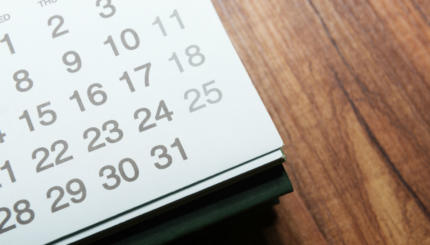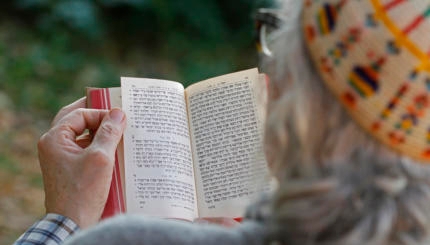One of the conversations that I had early in rabbinic school about how we connect to the wisdom of Torah has always stayed with me. While still in London, at Leo Baeck College, Professor Lisa Grant, Professor of Education at Hebrew Union College, New York, visited for a week and opened the doorway to a deeper kind of engagement with Torah for me. Perhaps it was because, at that early stage of rabbinic studies, we were deeply engrossed in trying to understand what the text actually said, or perhaps it was because we were immersed in the early history of our people at that time. But that kind of intellectual and academic immersion, while important, had distanced me from what, for me, were the more significant questions – how does the Torah of our texts connect to our lives today?
Dr. Grant asked us to be mindful of two different ways to make those connections. Both were legitimate, but our choice of which strategy to employ in different learning settings could make a huge difference in how we helped others connect to the wisdom of our tradition. “Do we start with life, and then seek to connect those life experiences to Torah, or do we start with the text of the Torah, and then seek to connect that text to something in life?” she asked. Over and over again, when seeking to make Judaism come alive for those to whom the text of Torah is too foreign and, perhaps, too frightening a place to start, I’ve found the way in through the Torah of our lives.
When I sit down with a bar or bat mitzvah student to begin to study their Torah portion with them, I always emphasize the importance of teaching both kinds of Torah to the congregation. That’s what we’ve always done – even when we read hard-to-penetrate ancient
midrashim
, we find Rabbis of old who were seeking to share observations about human nature, or the kind of world they lived in, and connect these observations back to Torah. Revelation continues to unfold, over and over again, when we are able to make those connections come alive today. And so, with those students, I usually begin by trying to get to know them a little better – to find out what they are passionate about, what activities they do, what issues they care about or organizations they have volunteered with so that, when we open the Torah commentary and start to read, we can do so with an eye out for those connections to the life of the student.
What does life to Torah look like? Looking back on your life so far, can you think of a conversation that you had with someone, or someone who opened the door to a new experience for you that sent you in a whole new direction? Or, looking back, you recognize that there was a time in your life when you were heading one way and, just because of a particular interaction – maybe a ‘chance’ encounter – you now recognize that there was a moment when you changed track to be on the path you find yourself now? I can think of many such moments in my life: the friend who encouraged me to go to my first Reform Jewish student event; the woman who introduced me to the music of Debbie Friedman; the room mate who asked me the right questions in the right way that, eventually, enabled me to come out as a lesbian, first to myself and then to others…
In the Torah, these kinds of experiences are moments of angelic encounter: the man that Hagar meets in the desert who, when she tells what she is running from but does not know where she is running to, tells her what direction she must go in next; the man that Joseph encounters in the field when he’s seeking his brothers, who points him to where he can now find his brothers, without whom the rest of his story with all its ups and downs might never have unfolded; the man who wrestles all night with Jacob, helping him to come to terms with his past and accept a new sense of identity… these are all understood to be “angels” in rabbinic tradition.
Why does it make a difference to teach and share about these connections between life and text? There are many answers to that question. For me, connecting to an ancient wisdom text that is part of my faith heritage has the power to enrich the meaning of the everyday events of my life. It also gives me a language with which to acknowledge the innate holiness of what otherwise might be dismissed as ordinary. We can simply speak of important influences in our lives, life-altering moments, and changes that we made. Or we can speak of “angelic encounters” – labeling the energy that was present in a particular encounter or experience as powerfully connected to the path of our life experience. I know that, for me, I’m more likely to feel and notice the spiritual power of those experiences if I have language to label them as something special and noteworthy. I am more likely to recognize that there is Torah in the ordinary, everyday of my life.
This is but one example of how, beginning by noticing the Torah of our lives we can find ourselves in the human drama played out in the Torah of our texts. There are so many more. When we can bring these two Torahs together, we see the power of Jewish wisdom to help us navigate and make meaning of our lives.
bat mitzvah
Pronounced: baht MITZ-vuh, also bahs MITZ-vuh and baht meetz-VAH, Origin: Hebrew, Jewish rite of passage for a girl, observed at age 12 or 13.
mitzvah
Pronounced: MITZ-vuh or meetz-VAH, Origin: Hebrew, commandment, also used to mean good deed.
Torah
Pronunced: TORE-uh, Origin: Hebrew, the Five Books of Moses.



